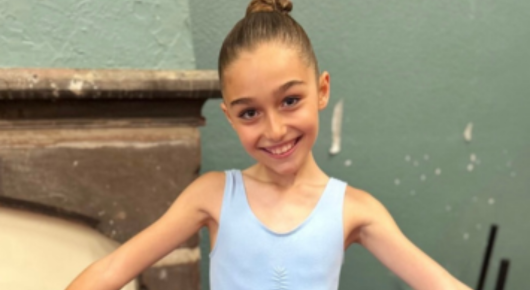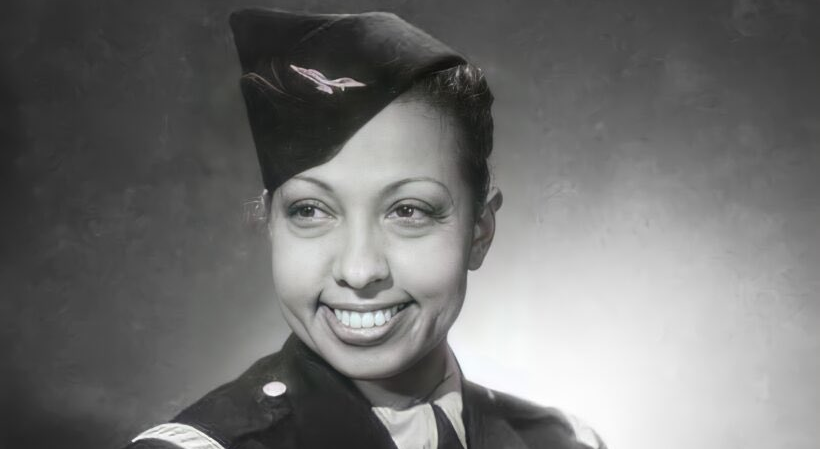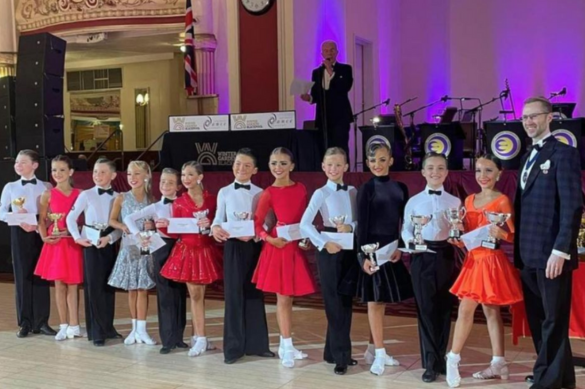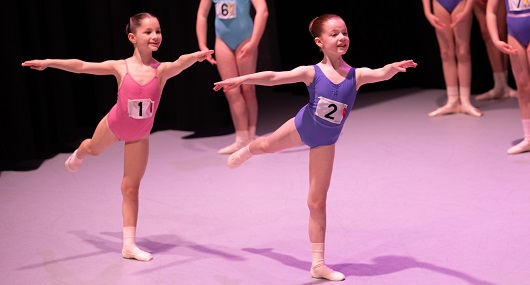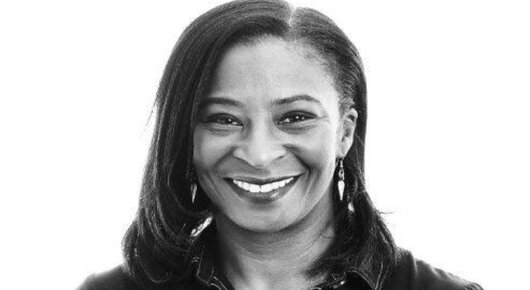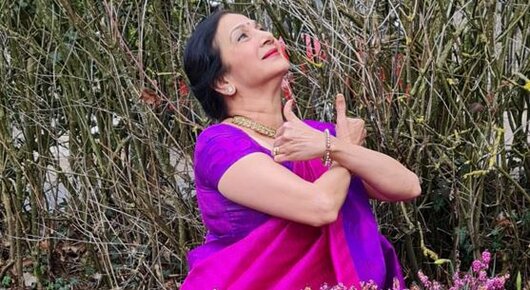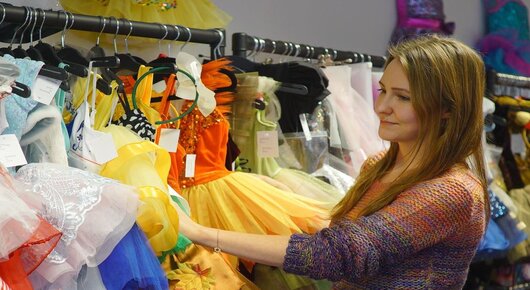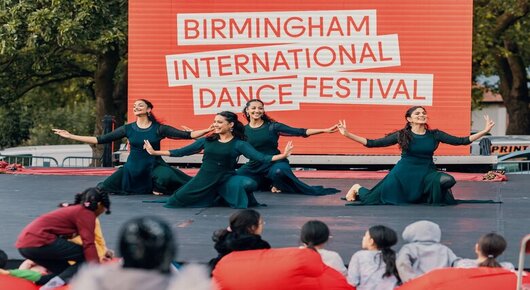1 January 2021
The path has been walked by many great researchers through the centuries searching for ancient Greek dance, too many to name in this article. But it was at the turn of the 20th century that the dance pioneer, Ruby Ginner, created a new dance medium for the stage using ancient Greek humanism and ideals to promote health and holism, a unique approach to the somatic interpretation of Ancient Greek dance-drama and somatic interpretation of mythology.
Dance teachers who work with this dance medium today in the 21st century realise not only the extreme versatility of its core technical baseand its safe technique but also its dynamism and expressiveness as a modern medium of natural dance movement. Today, it is the only existing dance medium that works on multiple levels, making it a wide holistic learning and a starting point for many avenues of learning thatchallenge the dance student and teacher. In Greece it takes on a new meaning as it embodies the whole of classical studies from ancient Greek language to philosophy, from therapy to ritual, becoming more than a dance form, rather a way of life.
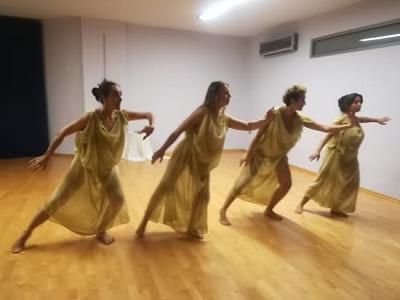
Apples of the Hesperides. From left to right , Andriana Papanicolaou, Arsinoe Lilly Karadima, Vasiliki Skrekou, Olga Papachrisostomou
The Ruby Ginner method, with the help of Ginner's books the “Gateway to the Dance”, 1960 and the “Technique of the Revived Greek Dance”, 1933 teaches the prodigiousness of Hellenic learning and promotes universal humanistic values as an encompassing holistic education. Hellenic learning is universal, democratic, and holistic and encompasses all the virtues a human needs to be balanced. It embodies an integrated, practical theatrical base as well as a theoretical one and reaches deeply into the knowledge and beauty that ancient Greece has to offer An ageless and continuing flow through the ages which can move humanity into its future as it has always done through the centuries, leading humanity to eros, to arete, and to a life of balance, simplicity, wisdom and respect. The message for the reader is to have the courage to take initiative, to delve deeper into the past, and from the past draw the best of what it has to offer in order to make a better, more competent present.
We need to take courage from the example of pioneers such as Ruby Ginner who between two world wars never gave up her dream and her life’s work. She handed to us, by passing knowledge down from teacher to pupil across four generations spanning a century, a dance form which reveals a more holistic, safer approach to life and the worldm where therhythm, relaxation and expression of the dance can become the real tools to aid us in trying times as Classical Greek dance did during the second World War.
The highlight of my teaching in Athens, Greece came in the pre-covid era in June 2019, in the Summer examination session with Karen Collings as examiner of my four Intermediate adult students. This was followed by an Award Presentation evening, spanning three generations of Classical Greek dancers which took place on Saturday, 2 November 2019 in Athens, Greece. Patricia Clancy, my dance teacher from South Africa , and Zasha Gerlach , from Namibia , but working in Greece, were honoured for their contribution to the teaching of the Ruby Ginner method in Athens.
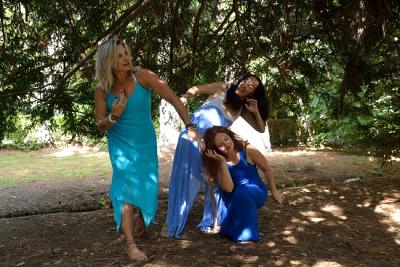
From left to right Katerina Karadima, Andriana Papanicolaou and Sandra Voulgari in the National gardens of Athens a photograph taken by Spyros Kanellakis
Patricia Clancy joined us in Athens from South Africa and together with the Athens group created an evening where students and teachers presented examples of their work to a warm audience of friends.
The exam dances choreographed by Andriana Papanicolaou after on Muses of the Arts, were presented by each dancer: Terpsichore, Muse of the Dance create for Helen Roumelioti, Euterpe, the Muse of Music, created for Arsinoe Lilly Karadima, Melpomene, the Muse of Tragedy, created for Vasiliki Skrekou and Thalia, the Muse of Comedy, created for Olga Papachrisostomou. The poet Socrates Pagiatakis read his poetic rendering for each Muse. The works created by the students themselves were the dramatic highlight of the evening. Especially moving were the solo dances performed by each student: “Cassandra” danced by Vasiliki Skrekou, “Aphrodite” danced by Olga Papachrisostomou, dances choreographed by Patricia Clancy and “Artemis” choreographed and danced by Arsinoe Lilly Karadima. The evening culminated in the performance of a ballet choreographed by Patricia Clancy, for the newly created Classical Greek Dance Company in Greece entitled "The Eleventh Labour of Herakles : The Golden Apples of the Hesperides."
A moment from the ballet choreographed by Patricia Clancy, for the newly created Classical Greek Dance dancers in Greece entitled "The Eleventh Labour of Herakles: The Golden Apples of the Hesperides. ” From left to right, Andriana Papanicolaou, Arsinoe Lilly Karadima, Vasiliki Skrekou, Olga Papachrisostomou.
Teaching Classical Greek Dance, the Ruby Ginner method in the era of the covid-virus and the lockdown, caught us in the midst of a business start-up in Athens, Greece. A new studio space near the ancient ruins of Keramikos created by Ariadne Nanou by the name of Ananda hopefully will become an Imperial Society of Teachers of Dancing Approved Dance Centre for Classical Greek Dance and will become the birthplace of an Academy of Ancient Ηellenic Performing Arts and Crafts.
While locked-in at home for fifty days, I started to ponder on how I was to transfer my teaching from the studio to the screen. My real concern was really, the safety of the student in their home of which the teacher has no control and whether the distance would slow the results and directness of the teacher - pupil feed back. The positive side to online meetings via Skype was that it gave us the opportunity to concentrate on the theoretical aspect of the Ruby Ginner method and we tucked into reading “Gateway to the Dance” , one-on-one, which led to further interest in deeper research. Free online access to data base classical literature and museums allowed for re-establishing the scientific value of Ruby Ginner's reseach. With the guidence of Spyros Zambelis, an amature reseacher and Professor of Musicology of the Athens University Stelios Psaroudakis, we spent the lockdown days searching pottery bases and reading the classics.
During the lockdown, a fantastic event brought dancers together from all over the world in an initiative taken by Sujata Banerjee Dance Company, in a 26-hour nonstop dance marathon - Dance Synergy. I presented Classical Greek Dance with Sandra Voulgari, dancer and dance teacher of the Isadora Duncan method in a tribute to the two pioneering women of modern dance. See the link here.
Classical Greek Dance has now become one of the many subjects taught to the students and participants of the Orchesis Group of Dora Stratou which is directed by Anna Lazou. Most of our meetings take place online and our practical class and rehearsals are in the National Garden of Athens. Reminding us much of the Classical Greek Dance performances in Hyde Park in 1915.
As a choreographer using the Ruby Ginner method, I am collaborating with many musicians who play their music on hand made reproductions of ancient Greek instruments , such as Petros Tambouris , Luis Paniagoua, Aliki Markantonatou and the music Group Euterpe , Kostas Fragis and Antonis Ktenas. Together with the actor and director Iannis Trandas we are preparing the theatrical rendering of a Victory Ode of Pindar , the 3rd Nemean, to be sung, danced and acted in the Ancient Greek language with the dancer,athlete and teacher of the ancient Greek Martial Art Pankration, Haralambos Fotiades, featuring as the ancient victor of the sport at the Nemean Games , Aristoklidas.
Currently, I am collaborating with Sandra Voulgari in a dance project called Pilgrims, “Isadora Duncan Meets Ruby Ginner” which aspires to make known in Greece the work of both dance pioneers of the 20th century, and who at the same time chose to be inspired by the rhythms of nature and the ideals of ancient Greece. We are performing in the dance studio to small audiences.
As the newly formed Dance Company “Eternal Forms”, a current performance with ecological educational and is an outdoor site-specific dance project called “Nymphs Abodes” that takes place in natural environments. We are following an idea pursued by Sandra Voulgari and Katerina Karadima as an antidote to the lock- down by taking dance back to the open spaces of nature and in music collaboration with Aliki Markantonatou and Lyre 'n Rhapsody we are taking part in the Lycabettus Festival 2020.
I am now continuing to teach a small group of students in prepartion for the next examination Classical Greek Dance examination session and am hoping that a solution will be found so that if our wonderful examiners from Britain cannot travel, that exams can be held remotely so that our generation can continue in the footsteps of our predecessors.
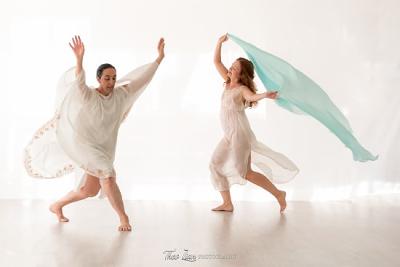
A moment from the performance Pilgrims, “Isadora Duncan Meets Ruby Ginner” with Sandra Voulgari . A photograph taken by Theo Lian
